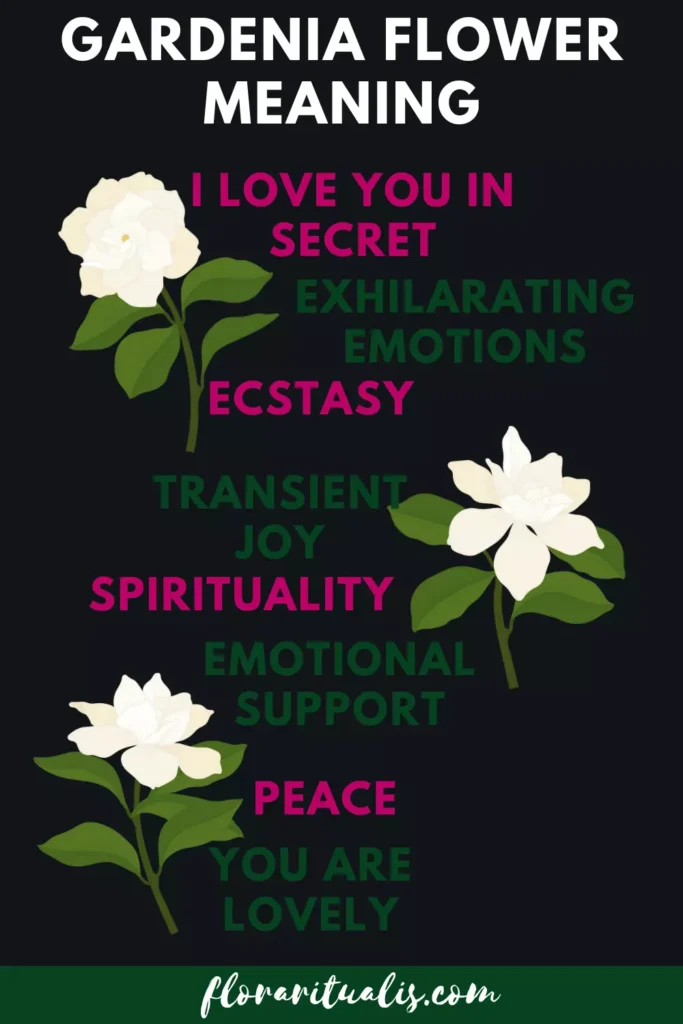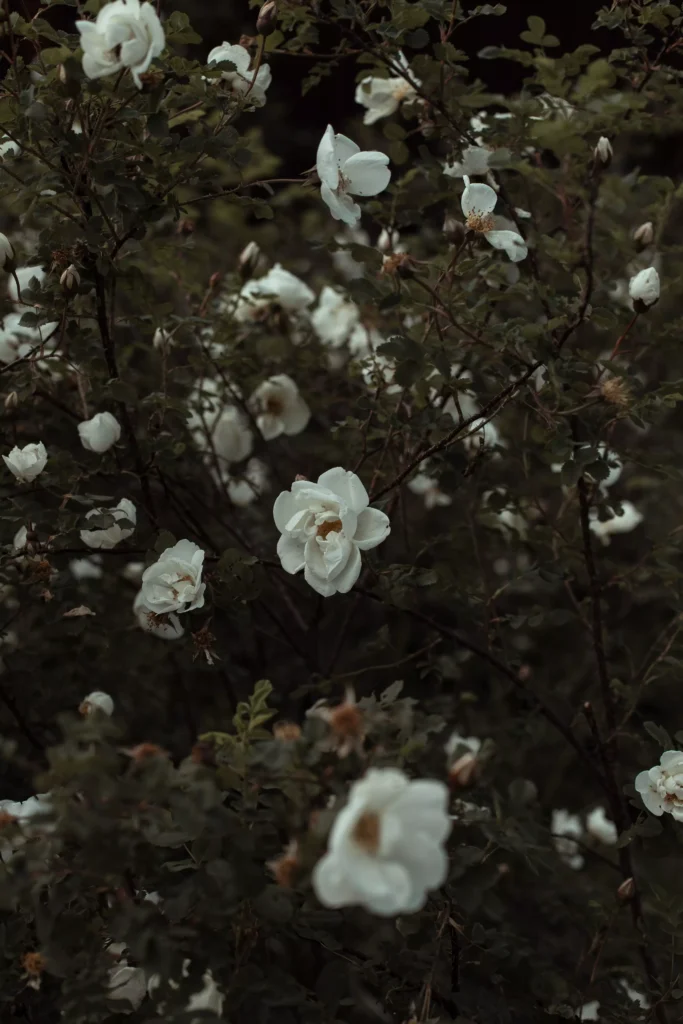The Gardenia flower meaning is linked to its history uses and how alchemists classify this flower.
The Gardenia flower is originally from China and Japan. However, it is also available across Asia.
The Gardenia flower also called Cape Jasmine is a flower that relates to the moon.
In this blog we’ll explore the meaning of this flower, its history and uses.
What is the Gardenia flower meaning?
The gardenia flower symbolises good luck, joy, love, peace, purity and spirituality. They are flowers that bloom in summer. Gardenias also reflects the qualities of the moon as alchemists place this flower under the dominion of the moon.
However, that’s not all the gardenia flower was prised in China for its medicinal uses. Lets get in details into all of the gardenia flower meaning.
Cancer birth flower
Gardenia flower meaning relates to the qualities of the moon. The moon’s qualities are intuition, instinctual and feminine.
The Cancer zodiac’s ruler is the moon. Cancer’s are known for their sensitivity and also their exceptionally caring nature. They are also very intuitive.
Furthermore, the Cancer zodiac is the natural ruler of the 4th house in astrology. The fourth house relates to the relationship with ones mother, domestic life and family roots. This flower will make a perfect gift as a cancer birth flower.

History of the Gardenia flower
The Gardenia or Cape Jasmine in Japanese culture is called kuchinashi-no-hana. It translates to “without a mouth” or “without a voice”.
In the book Kamikaze Diaries, a lieutenant called Takushima Norijiro left a diary for his son. The diaries called Cape Jasmine was chosen because it was the favourite flower for his son.
It was also a metaphor for the Japanese people, they couldn’t express openly their opinion about the war. Their thought were kept private and sometimes only limited to a diary.
Introduction to Britain
In 1754 a captain called Hutchinson of the Godolphin discovered a bush of the gardenia flower in the Cape of Good Hope, this was the double flowered variety.
He was struck by the beauty of the plant and decided to bring back the whole plant in a pot to England.
Captain Hutchinson gave the plant to one of this good friend Warner of Woodford Row in Essex. He was a cultivator of exotic plants.
Mr Warner allowed Mr Gordon a nurseryman at Mile End to take layers from the plant.
He was successful and now it is very common in England gardens.
The single flowered species was brought in England around 1820.

Uses of gardenia flower in Chinese medicine
The gardenia flower in Chinese is called Zhi Zi Hua, its medicinally properties were extensively written in Chinese Traditional medicine. Lets explore some of them.
The gardenia flower aids in draining heat from the lower Jiao burner (a concept in Chinese Traditional Medicine).
The pods of the gardenia flower were used as a yellow dye.
It was used medicinally to increase the menstrual flow.
The seeds of the gardenia flower were also used as a treatment for rheumatism and jaundice.
If there was accumulated heat in the chest then the gardenia plant would to reduce the heat.
It also pacifies the gall bladder and the liver from inflammation which helps to increase their functions.
The gardenia flower was also known for its contraceptive effects.

If you liked our blog on the gardenia flower meaning then also check our other blogs on the Cancer Birth Flower.
References
Cumo, C. (Ed.). (2013). Encyclopedia of Cultivated Plants [3 volumes]: From Acacia to Zinnia. ABC-CLIO.
Dietz, S. T. (2022). The complete language of flowers the complete language of flowers: A definitive and illustrated history – pocket edition. Wellfleet Press.
Junius, M. M. (1986). Practical handbook of plant alchemy: How to prepare medicinal essences, tinctures and elixirs. Inner Traditions Bear and Company.
Thiselton Dyer, T. F. (1994). Folklore of Plants. Llanerch Press.
Watts, D., & Watts, D. C. (2007). Dictionary of Plant Lore. Academic Press.
Deena Bsingh, a UK-born, Mauritius-raised content writer, is a dedicated explorer of the ancient world’s hidden treasures. Armed with classical studies knowledge and a decade of spiritual immersion, Deena delves deep into the wellspring of ancient wisdom. Her illuminating writings on flower meanings and culinary history are imbued with the profound insights she has gathered on her journey. Through her Medium articles, she guides readers on transformative journeys that bridge the gap between ancient cultures and contemporary consciousness, offering a rich tapestry of understanding that endures through time.

